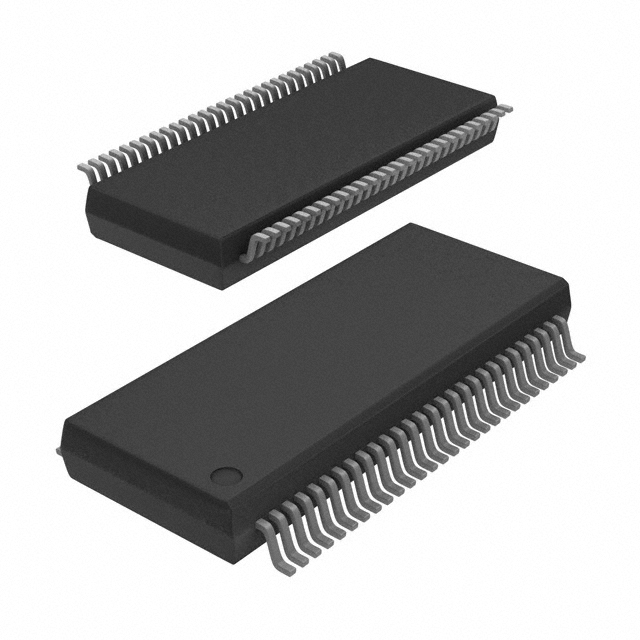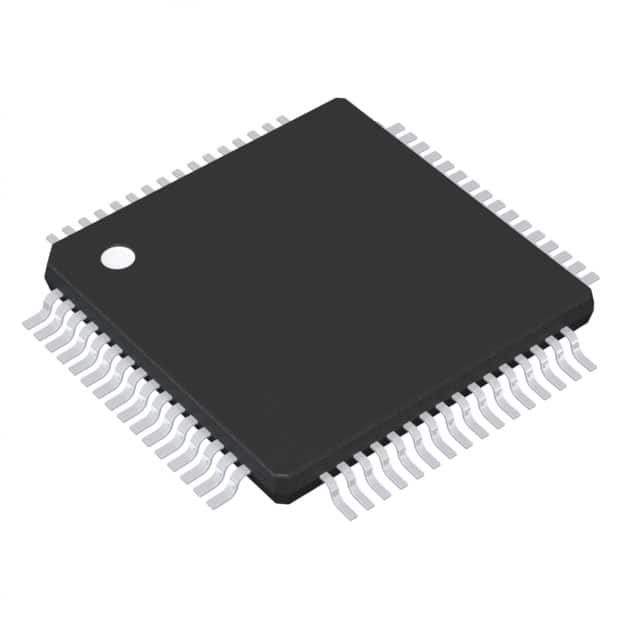Ⅰ. Logic - Universal Bus Functions
Ⅱ. Physical Characteristics of Logic - Universal Bus Functions
Ⅲ. Electrical Characteristics of Logic - Universal Bus Functions
Logic - Universal Bus Functions
Logic gates are fundamental building blocks in digital logic design. They are electronic circuits that perform basic logical operations on one or more binary inputs to produce a binary output. Universal bus functions refer to a set of logic gates or operations that are commonly used in digital systems to manipulate bus signals. These functions operate on bus signals, which are a collection of wires or lines that carry multiple binary values simultaneously.

Here are the commonly used universal bus functions:
1.Buffer: A buffer is a simple logic gate that passes the input signal to the output without any modification. It amplifies and transmits the input signal to the output, ensuring minimal signal degradation.
2.Tristate Buffer: A tristate buffer, or tristate driver, is similar to a buffer but includes an additional control signal. The control signal, often referred to as the enable (EN) signal, determines whether the buffer is active (passing the input signal to the output) or in a high-impedance state (disconnected from the output bus). Tristate buffers are used to allow multiple devices to share a bus without causing conflicts.
3.Multiplexer (MUX): A multiplexer is a logic circuit that selects one input signal from multiple inputs and routes it to the output based on control signals. The control signals determine which input is selected and transmitted to the output. Multiplexers are commonly used for data selection or switching between different sources of data.
4.Demultiplexer (DEMUX): A demultiplexer is the reverse of a multiplexer. It takes a single input signal and distributes it to one of several output lines based on control signals. Demultiplexers are used to route data to different destinations based on the control inputs.
5.Decoder: A decoder is a logic circuit that converts a binary input code into a set of output signals. It has multiple input lines and multiple output lines, with each unique combination of inputs corresponding to a specific output line. Decoders are often used in address decoding or in control units to enable specific operations based on input codes.
6.Encoder: An encoder performs the opposite function of a decoder. It takes a set of input signals and encodes them into a binary output code. Encoders are commonly used to compress data or reduce the number of signals required to represent a specific set of information.
These universal bus functions are fundamental to digital logic design. They can be combined and interconnected to create more complex logic circuits, such as arithmetic circuits, memory systems, or control units. By using these functions, designers can manipulate and process bus signals efficiently, enabling the desired functionality in digital systems.
Physical Characteristics of Logic - Universal Bus Functions
The physical characteristics of logic gates and universal bus functions in digital logic design can vary depending on the specific implementation technology and the intended application. However, there are some common physical characteristics to consider:
1.Package Type: Logic gates and universal bus functions are typically available in various package types, such as Dual In-line Package (DIP), Small Outline Integrated Circuit (SOIC), Thin Small Outline Package (TSOP), Ball Grid Array (BGA), and Quad Flat No-leads (QFN). The package type determines how the logic gates are mounted and connected to the circuit board.
2.Pin Configuration: Logic gates and universal bus functions have specific pin configurations that determine the connections required for power supply, input signals, output signals, and control signals. The pin count and arrangement can vary depending on the specific function and the implementation technology.
3.Supply Voltage: Logic gates and universal bus functions have specified supply voltage ranges within which they operate reliably. It is crucial to provide the appropriate supply voltage to ensure proper functionality and prevent damage.
4.Operating Current: Logic gates and universal bus functions have an operating current specification that indicates the current consumed by the device during normal operation. This specification helps determine the power requirements and influences the overall power consumption of the digital system.
5.Input/Output Voltage Levels: The input and output voltage levels of logic gates and universal bus functions should be compatible with the voltage levels supported by the other components and circuits in the system. It is important to ensure proper voltage compatibility to enable reliable signal communication and avoid signal distortion.
6.Propagation Delay: Propagation delay refers to the time it takes for the output of a logic gate to respond to a change in its input. Logic gates and universal bus functions have specified propagation delay values, which impact the overall timing performance of the digital system. Minimizing propagation delay is crucial in high-speed applications.
7.Noise Immunity: Logic gates and universal bus functions should have adequate noise immunity to tolerate common noise sources present in the digital system. Good noise immunity ensures reliable signal processing and reduces the risk of errors caused by noise interference.
8.ESD Protection: Many logic gates and universal bus functions incorporate built-in electrostatic discharge (ESD) protection mechanisms to safeguard the devices against ESD events during handling and operation. These protection features help prevent damage to the devices caused by electrostatic discharge.
It is important to refer to the datasheets, application notes, or manufacturer's documentation for precise information regarding the physical characteristics of specific logic gates and universal bus functions. These documents provide detailed specifications and guidelines for selecting, integrating, and using the functions within a digital system.

Electrical Characteristics of Logic - Universal Bus Functions
The electrical characteristics of logic gates and universal bus functions in digital logic design are essential to ensure proper operation and compatibility within a digital system. Here are some common electrical characteristics to consider:
1.Supply Voltage: Logic gates and universal bus functions have specified supply voltage ranges within which they operate reliably. It is crucial to provide the appropriate supply voltage to ensure proper functionality and prevent damage. The supply voltage should be within the specified range to ensure correct logic levels and reliable operation.
2.Logic Levels: Logic gates and universal bus functions have defined voltage levels that represent the logical states of their inputs and outputs. Common logic levels are high (logic 1) and low (logic 0). The specific voltage thresholds for determining these logic levels should be considered to ensure proper signal compatibility between different components within the digital system.
3.Input/Output Voltage Levels: Logic gates and universal bus functions have specified voltage levels for their input and output signals. It is important to ensure that the voltage levels of the inputs and outputs are compatible with the voltage levels expected by other components and circuits in the system. Proper voltage compatibility ensures reliable signal communication and avoids signal distortion.
4.Input/Output Current: Logic gates and universal bus functions have input and output current specifications. The input current determines the amount of current required by the gate's input pins, while the output current specifies the maximum amount of current that the gate can drive on its output. It is important to ensure that the input and output current capabilities are sufficient for the intended application and to avoid overloading or damaging the gates.
5.Fan-Out: The fan-out of a logic gate refers to the maximum number of inputs that the gate can drive with its output signal. It is essential to consider the fan-out capability to ensure that the logic gate can drive the required number of inputs without compromising signal integrity.
6.Propagation Delay: Propagation delay refers to the time it takes for a logic gate to propagate a change in its input to its output. It is important to understand the propagation delay characteristics of logic gates and universal bus functions, as it affects the timing behavior of the overall digital system. Minimizing propagation delay is crucial, especially in high-speed applications.
7.Power Consumption: Logic gates and universal bus functions consume power during operation. It is important to consider the power consumption of these functions, especially in battery-powered or low-power applications, to ensure efficient use of power resources and to prevent overheating.
8.Noise Immunity: Logic gates and universal bus functions should have good noise immunity to tolerate common noise sources present in the digital system. Noise immunity ensures reliable signal processing and reduces the risk of errors caused by noise interference.
It is important to refer to the datasheets, application notes, or manufacturer's documentation for precise information regarding the electrical characteristics of specific logic gates and universal bus functions. These documents provide detailed specifications and guidelines for selecting, integrating, and using the functions within a digital system.



